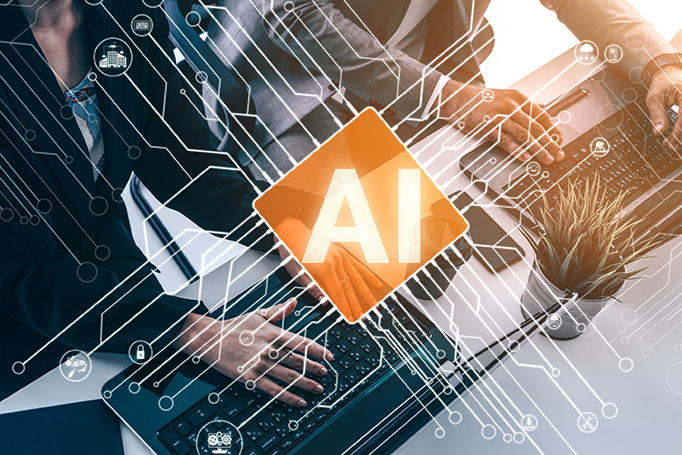Artificial intelligence tools at the USPTO
Blog by Drew Hirshfeld, performing the functions and duties of the Under Secretary of Commerce for Intellectual Property and Director of the USPTO

To incorporate AI into our examination tools and processes at the USPTO, we’ve undertaken a comprehensive development strategy including extensive market research and rigorous testing of a wide range of proof-of-concepts to identify the best solutions. Our objective is not just to deploy smarter technology, but to build a smarter organization by coupling the strengths of our workforce with the strengths of AI. This is the beginning of a whole new trajectory in how we leverage technology to transform patent and trademark operations for the better.
We are incorporating AI tools into two critical areas of patent examination: search and classification.
Performing a complete prior art search is a critically important component of the patent examination process and the USPTO’s mission to issue reliable patent rights. However, the exponential growth of prior art and tremendous pace of technological innovation make it increasingly more difficult to quickly discover the most relevant prior art. To meet this challenge, we have developed an AI-based prototype search system that helps to identify relevant documents and provides suggestions for additional areas to search. In addition to providing world-class patent AI models, the system is designed to learn from the world’s greatest patent searchers, our USPTO examiners. The system is configured to automatically capture feedback data from our examiners to yield additional enhancements over time. We are also developing features to help examiners interpret results generated by the AI models to provide transparency into the system. A beta version of this new AI tool was released to a subset of examiners in March 2020. Assessments conducted to date yielded promising results, and steps are being taken to incorporate AI into our next generation search tool for examiners.
We also developed an auto-classification tool that leverages machine learning to classify patent documents using the Cooperative Patent Classification (CPC) system. The system can suggest CPC symbols, and includes the ability to identify claimed subject matter for additional refinement of the suggested CPC symbols similar to our AI search system. The auto-classification system also includes indicators that provide users with insight into the reasoning of the AI, by linking suggested CPC symbols to specific portions of the document. Enhanced feedback mechanisms designed into the system integrate with our existing classification processes to support training the AI. Based on an analysis of system performance, the USPTO implemented auto-classification in December 2020 to automatically identify claimed subject matter with CPC for internal operations. As a result, the agency is realizing reductions in procurement expenditures for acquiring CPC data. Additionally, we are continuing to develop further capabilities to support a broader range of patent classification requirements at the USPTO.
These successes are demonstrating the value of applying AI to improve the agency operations and strengthen the IP system. To continue building from these successes, our Patents team has expanded their investigations to explore potential new opportunities to leverage AI. For example, research is now underway on AI-based image search capabilities which could open up whole new ways to retrieve prior art. This could be particularly useful for searching patent applications where examiners rely heavily on images for making patentability determinations, such as design patent applications.
On the Trademarks side, we recently completed market research in AI capabilities for image comparison and for checking the acceptability of identification of goods and services against the entries in the Trademarks ID Manual. The USPTO team developed AI prototypes to compare trademark images, to suggest the correct assignment of mark image design codes, and to determine the potential acceptability of the identifications of goods and services. A beta test of these prototypes through a common user interface with approximately 10 stakeholders began in November 2020 and continues, with a larger beta possible later this year. In addition, the USPTO has tested solutions for false specimen detection capabilities using a software program, which was integrated on December 1, 2020 into the agency’s efforts to identify digitally manipulated specimens of use or mock-ups of web pages. Finally, a prototype of an AI based chatbot for answering frequently asked questions via the USPTO website could be ready for beta testing later this year.
Overall we have achieved some remarkable milestones and made great strides toward integrating AI into the USPTO’s day-to-day functions. Stay tuned for more exciting updates from the USPTO on AI in the near future.
Posted at 06:12AM Mar 18, 2021 in USPTO | Comments[7]


Posted by Bruce A. Lev on March 18, 2021 at 10:16 AM EDT #
Posted by Fritz M. Fleming on March 19, 2021 at 05:05 AM EDT #
Posted by Vincent Violago on March 19, 2021 at 06:56 AM EDT #
Posted by Vincent Violago on March 19, 2021 at 07:04 AM EDT #
Posted by Vincent Violago on March 19, 2021 at 07:04 AM EDT #
Posted by Kashif Mahmood on March 20, 2021 at 03:37 PM EDT #
Posted by cara menanam bawang merah on March 20, 2021 at 09:55 PM EDT #